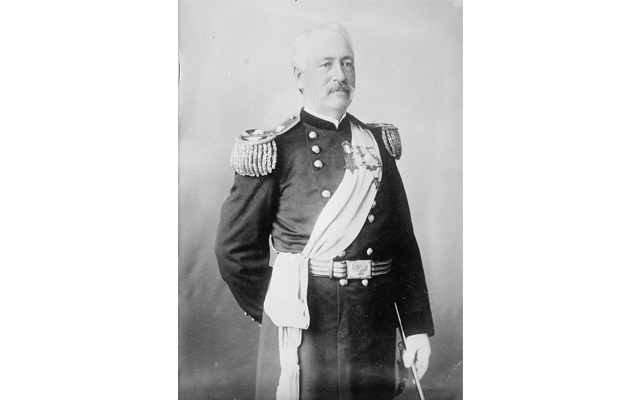
HOULTON, Maine — Many who live in Houlton know that the statue of a Union soldier in Monument Park was dedicated to all Civil War soldiers from the community, including Major Gen. Henry Clay Merriam.
But not many people also know that the U.S. Army veteran and Medal of Honor winner, who was born in Houlton, was also an inventor who led a life of triumph and tragedy.
Merriam was born in 1837, according to Cora M. Putnam, author of The Story of Houlton, and entered Colby College after his high school graduation. After commencement, he enlisted in the military and raised a company of volunteers in Houlton. He was then commissioned captain of Co. H, 20th Maine Volunteer Infantry. After fighting in the Battle of Antietam, he was promoted to lieutenant colonel for his actions and was sent to Louisiana. After commanding the 1st Louisiana Native Guard, he led soldiers through the Siege of Port Houston in 1863.
In 1865, he led what was then called the United States Colored Troops on an attack on Fort Blakely in Alabama, action that earned him the Medal of Honor. By the end of the fighting, the Civil War regiment had produced 15 Medal of Honor winners.

This gravestone marks the burial site at Arlington National Cemetery of Major Gen. Henry Clay Merriam, a Houlton native who was awarded the Medal of Honor. (Arlington National Cemetery)
According to the citation, Merriam received the award after he “volunteered to attack the enemy’s works in advance of orders and, upon permission being given, made a most gallant assault.”
Cheryl Harrington of Houlton, who often visits Monument Park in the summer for picnics, said recently that she had no idea Merriam was so decorated.
“I have seen the statue, of course, but really have not paid that much attention to it,” she admitted. “I took Maine History in the seventh grade, but I really don’t remember learning about him at all. I seriously never knew we had a Medal of Honor winner who was from Houlton.”
Her daughter, Kimberly Grossman, who also grew up in Houlton, said she recalled learning about Merriam but never knew “the full story about what he accomplished.”
After the Civil War, Merriam married Lucy Getchell of Waterville, according to Putnam, and remained in the Army as a captain. He served in the Apache War in New Mexico in 1867, and he was still there three years later when tragedy struck. While he was away, his 24-year-old wife and 2-year-old daughter, Mary E. Merriam, remained in Texas, where both drowned in a flash flood that also killed eleven soldiers. Both are buried in Pine Grove Cemetery in Waterville, according to burial records.
Merriam later commanded troops in the Spanish American War in 1898 and intervened to suppress riots in Idaho in 1899, for which he received a commendation from President William McKinley.
As an inventor, Merriam designed a knapsack that was distributed to soldiers in World War I. The “Merriam Infantry” pack was used to hold a soldier’s socks, shaving kit, army blanket and more. Several of the knapsacks are still available for sale on various internet sites.
After the death of his wife and child, Merriam married Una Macpherson MacNeil of Jamaica, and they had five children. He kept a summer home in Portland until his death in 1912. Putnam noted that on Merriam’s last visit to Houlton, he stopped by the Cary Library and read a list of names of soldiers who had enlisted in the military with him.
Merriam was promoted in retirement to major general in 1903 by a special act of Congress.
Merriam, who died one day before he turned 75-years-old, is buried in Arlington National Cemetery in Virginia. Numerous relatives also dedicated their life to military service, including his brother, Army Capt. Lewis Merriam, who is buried beside him. His son, Capt. Henry MacPherson Merriam, who was born in Houlton in 1877, also served in the military and died in 1942. Two of his children, Charles and Cyrus Merriam, are buried in Black Point Cemetery in Scarborough.




